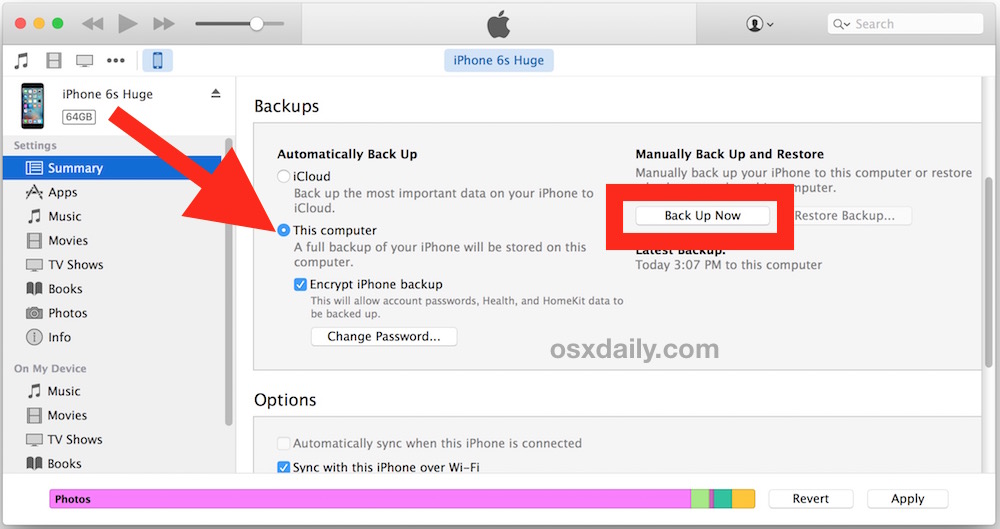

Now, as easy or as trivial as it sounds, moving your iTunes backups to an alternate location isn’t exactly straightforward, because Apple doesn’t provide you with an easy way to do this.
#How do i change iphone backup location mac how to
If this is the case, here’s a handy guide that explains how to move your iPhone and iPad backups to an external drive, so that you can clear up storage space on your Mac’s internal drive and instead back them up onto your choice of of an external hard drive, be it a portable hard drive, USB pen drive, or a NAS drive. Similarly, you may be already starting to feel the pinch and might want to move these backups away from the internal drive, so as to not run out of storage on your Mac. Your iPhone and iPad backups via iTunes will soon be big enough to not fit onto the internal hard drive of your Mac. You don’t have to be a genius at math to see the problem here. On the other hand, as Apple pushes for SSD internal storage on Macs, the in-built storage on Macs has been shrinking to 256 GB or 512 GB as well. Over the last few years, the storage space available on iPhone and iPad has been growing substantially, and we now have 256 GB and 512 GB devices commonly seen in the market.

Unfortunately, if you have been backing up your iOS device to iTunes for a few years now, your Mac is probably being overburdened by the large file size of these backups. Before Apple introduced the ability to back up all the data on your iPhone or iPad to iCloud, iTunes was the only recommended method of automatically backing up your iPhone and iPad to your Mac. If you have traditionally synced your iPhone or iPad with the iTunes app on your Mac, there’s a very good chance that iTunes has been backing up all the data on your iOS device. If iTunes Backups of your iPhone and iPad are taking up too much space on your internal hard drive (Macintosh HD), then here’s a handy guide to move iOS backups to an external hard drive.


 0 kommentar(er)
0 kommentar(er)
